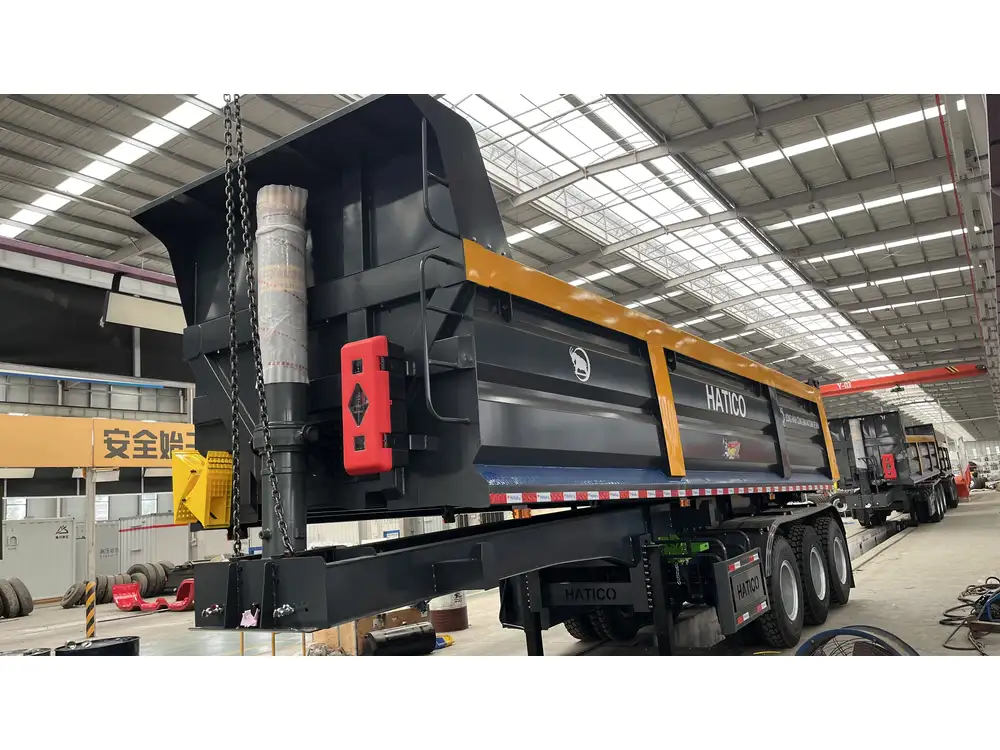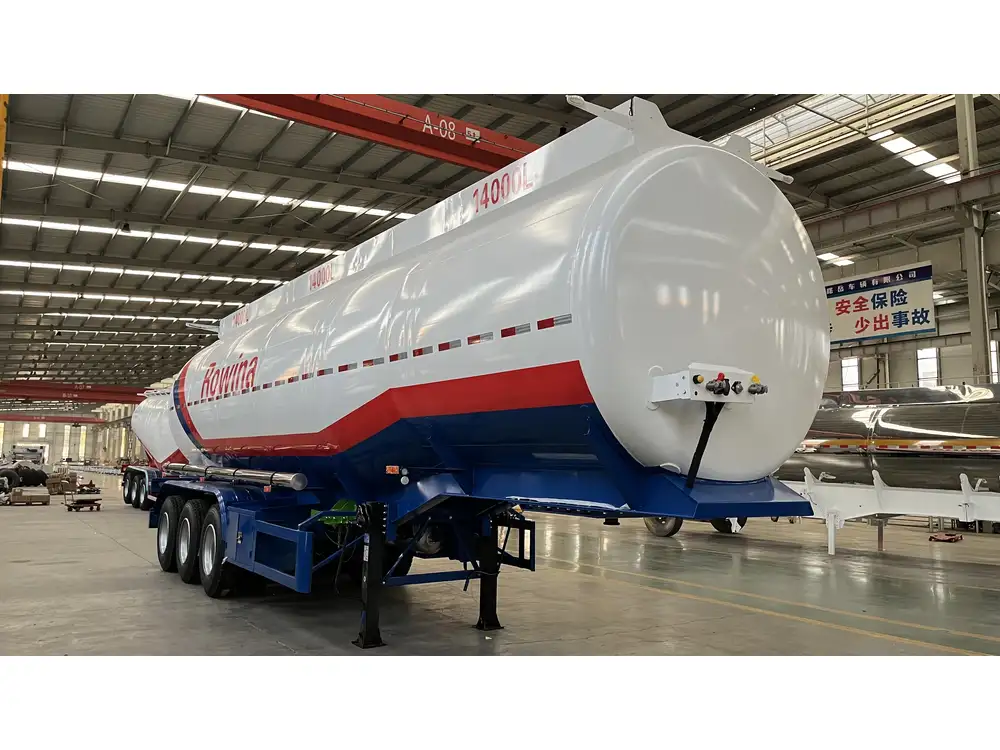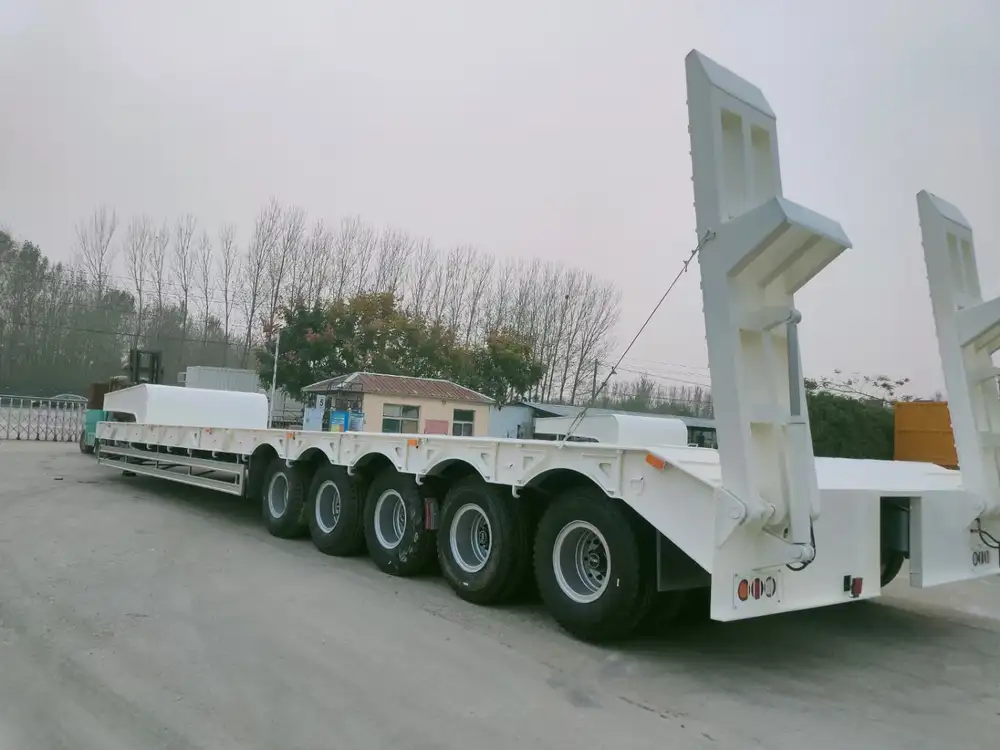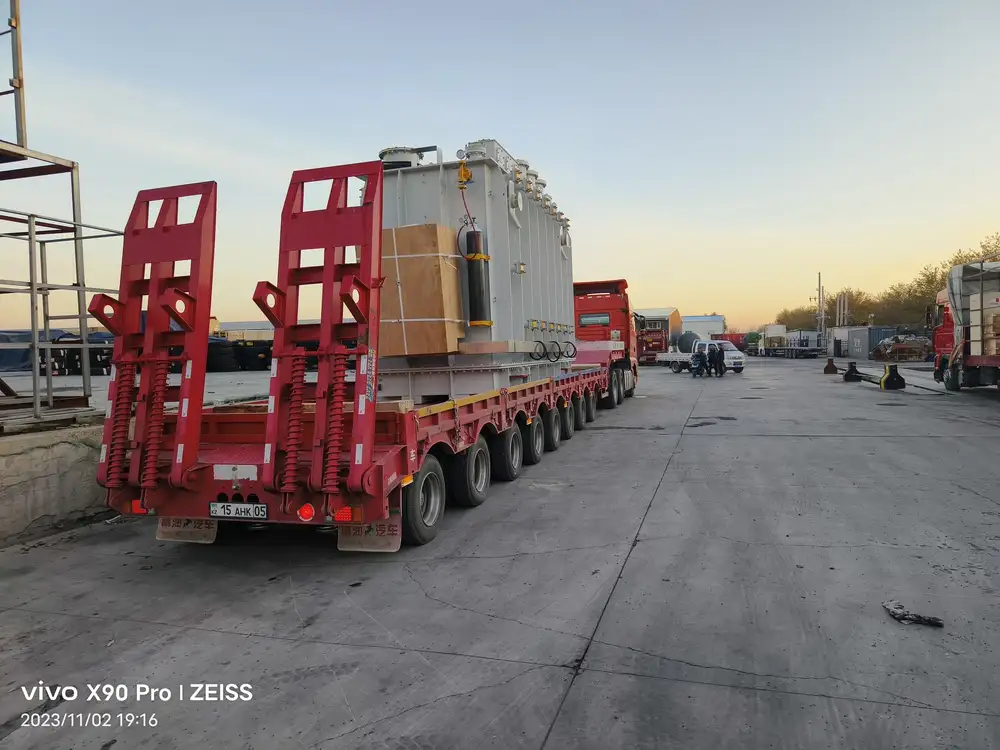When traversing the vast landscapes of freight logistics, one term that inevitably surfaces in discussions around semi-trailers is Gross Vehicle Weight Rating (GVWR). This metric is crucial for manufacturers, transport companies, and drivers alike. In this article, we delve deeply into the meaning, significance, calculation, and implications of GVWR, ensuring you grasp its nuances and applications.
What is GVWR?
Definition of GVWR
GVWR, or Gross Vehicle Weight Rating, is the maximum weight a vehicle is rated to safely carry, including its own weight, all cargo, and any additional equipment. It is a critical specification for semi-trailers, influencing everything from loading practices to regulatory compliance.

Components of GVWR
To comprehend GVWR fully, it is essential to dissect its components:
- Vehicle Weight: This includes the weight of the semi-trailer itself when it is empty.
- Cargo Weight: The total anticipated weight of all goods loaded onto the trailer.
- Additional Equipment: This could include the weight of the hydraulic systems, safety gear, and any other equipment that may be permanently affixed to the trailer.
The formula for calculating GVWR can be generally represented as:
GVWR = Vehicle Weight + Cargo Weight + Additional Equipment Weight.
Importance of GVWR in the Transportation Industry
Legal Compliance and Safety
Understanding and adhering to GVWR is paramount for safety and legal compliance. Overloading a semi-trailer can lead to catastrophic failures, including tire blowouts, braking issues, and increased wear and tear on vehicle components. The Federal Motor Carrier Safety Administration (FMCSA) enforces strict regulations regarding GVWR, necessitating that drivers and fleet managers stay informed and compliant.

Financial Implications
Operating within the limits of GVWR can also have significant financial implications. Overloading can result in hefty fines and legal liabilities, not to mention potential damage to the trailer itself. By understanding GVWR, companies can avoid these costs and ensure a longer lifespan for their equipment.
Effect on Vehicle Performance
The GVWR has a direct impact on a semi-trailer’s performance. When a trailer is loaded within its GVWR, it will generally demonstrate optimal handling, fuel efficiency, and longevity. Conversely, exceeding this rating can cause:
- Increased fuel consumption.
- Diminished braking efficiency.
- Poor stability and maneuverability.
Understanding the relationship between weight and performance allows operators to maximize efficiency in their operations.
Factors Influencing GVWR

Trailer Type and Construction
Different types of semi-trailers have varying GVWR ratings. The construction materials—such as aluminum versus steel—affect the weight-carrying capacity as well. For instance, low-profile trailers might have different weight ratings than standard flatbeds due to their design purpose and intended use.
Axle Configuration
The axle configuration on a semi-trailer plays a crucial role in determining its GVWR. More axles typically allow the vehicle to carry more weight. Below is a comparison of different axle configurations and their general impact on GVWR:
| Axle Configuration | Typical GVWR Range |
|---|---|
| Single Axle | Up to 20,000 lbs |
| Tandem Axle | 30,000 to 40,000 lbs |
| Tri-Axle | 50,000 to 60,000 lbs |
Manufacturer Specifications
Each semi-trailer comes with specifications provided by the manufacturer, detailing the GVWR based on rigorous testing and standards. Familiarizing oneself with these specifications is crucial for ensuring compliance with operational requirements.

Calculating the GVWR of Your Semi-Trailer
Step-by-Step Guide
To calculate the GVWR for your semi-trailer, follow these steps:
- Determine Vehicle Weight: Check the manufacturer’s plate on your trailer for its empty weight.
- Estimate Cargo Weight: Include an estimate of the average weight you plan to carry.
- Add Additional Equipment Weight: Include the weight of any fixed equipment, such as toolboxes or added safety features.
- Sum of All Weights: Calculate the total to arrive at your GVWR.
Example:
- Vehicle Weight = 10,000 lbs (empty trailer)
- Cargo Weight = 30,000 lbs (average load)
- Additional Equipment = 2,000 lbs
GVWR = 10,000 + 30,000 + 2,000 = 42,000 lbs
Verifying Compliance
Once you have calculated the GVWR, it’s vital to verify compliance with local and federal regulations. Consult with DOT guidelines relevant to your region.

Common Misunderstandings about GVWR
Misconception: GVWR is the Same as the Vehicle’s Weight
One of the common misconceptions is equating GVWR to the weight of the vehicle alone. The GVWR must always encompass the total weight of the vehicle, its payload, and any additional equipment, which can lead to significant differences.
Misconception: Exceeding GVWR is Safe with Stronger Trailers
While some might believe that a sturdier trailer can safely handle an overload, this assumption is hazardous. Overloading can lead to premature wear and catastrophic failure, compromising safety and incurring costs.

The Consequences of Ignoring GVWR
Legal Penalties
Ignoring GVWR regulations can lead to substantial fines and penalties. Transport authorities regularly conduct checks, and violations can lead to fines ranging from hundreds to thousands of dollars, depending on the severity of the overload.
Increased Maintenance Costs
Consistent operation over GVWR can stress components, leading to increased maintenance frequency and costs. Parts such as tires, brakes, and suspension systems can wear out quicker, reducing overall operational efficiency.

Liability Issues
In the unfortunate event of an accident attributable to overloading, liability rests squarely on the operator. This can open avenues for lawsuits, insurance issues, and reputational damage—events that can prove detrimental to any business.
Best Practices for Managing GVWR
Regular Training for Drivers
Regular training sessions for drivers on the importance of GVWR and its implications can foster a culture of safety and compliance. Providing practical examples during training sessions can enhance understanding.

Systematic Weight Monitoring
Utilizing weight monitoring systems can enhance real-time tracking of cargo loads. Tools such as onboard scales facilitate compliance and aid in preventing overload situations.
Regular Vehicle Inspection
Routine inspections should be conducted to ensure that trailers are operating within their GVWR limits. Regular checks on axles, brakes, and tires not only enhance compliance but also bolster safety.
Future Considerations: Innovations in Semi-Trailer Weight Management

Emerging Technologies
As the logistics industry continues to evolve, so too do the technologies that aid in managing GVWR. Innovations such as load-sensing technologies provide real-time data about weight distribution, enhancing both safety and efficiency.
Sustainable Practices
The push for sustainability in transportation means evaluating the materials used in trailer construction. Lightweight materials could result in higher payload capacities without compromising safety, potentially altering the future benchmarks for GVWR.
Conclusion
Understanding the Gross Vehicle Weight Rating (GVWR) of semi-trailers is not just valuable—it’s essential for safe, compliant, and efficient operations in the freight industry. From ensuring safety on the roads to avoiding legal penalties, a firm grasp of GVWR principles equips manufacturers, transport companies, and drivers with the knowledge they need to thrive. Adopting best practices for managing weight, staying informed about regulations, and leveraging technology can lead to operational excellence and a safer transport environment.
By emphasizing these crucial elements, we position ourselves not only as key players in the industry but also as responsible actors committed to safety and efficiency.



